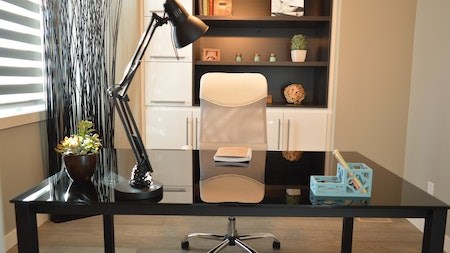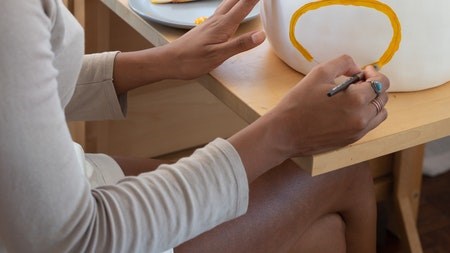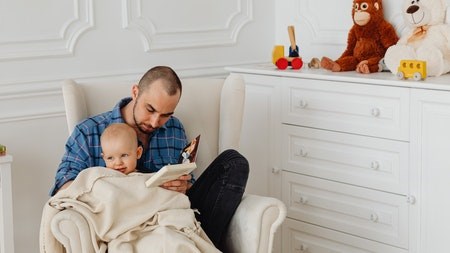A cluttered office can be a huge barrier to productive and focused work. Clutter is distracting, mentally draining and exhausting – so working in an environment filled with unwanted items can prevent you from making progress.
It’s approaching the end of the year - a perfect time to take stock of the items in your home office and make a plan to clear out some space to prepare for the new year.
WATCH : Future office trends.
If you don’t know where to start, here are some tips to help you get organised.
Expectations
Before you start, you need to have a good understanding of what you want your office to look like and how it should function.
Spend some time setting your goals:
- What do you want the space to look like once you’ve decluttered and organised?
- What will your desk look like?
- What will your shelves look like?
A clear goal will motivate you to get started. Also, if you’re feeling overwhelmed at any stage, thinking about the goal could help you decide on the next step in the process.
Be systematic
Decluttering your entire office at once might seem a bit intimidating. However, you can get a lot done if you work your way around the room, completing one area at a time.
Make a list of every section that needs attention, for example, your desktop, drawers and filing cabinet. Then cross off each item as you finish sorting it.
Documents and random supplies tend to build up over time, and it’s easy to think you should keep things ‘just in case’. Instead, try only to keep items you need for work at the moment or that you may need for tax compliance reasons.
- Make digital copies of any ‘just in case’ items and sign up for a cloud storage service to back them up.
- Collaboration and project management tools are great for managing communication with team members and clients and can eliminate the need to keep as many hard copies.
Storage
Once you’ve thrown out all non-essential items, you need to file the essential ones. Start by sorting them into categories that make sense to you. For instance, you could have different files, trays or drawers for each of your main clients or various tasks like marketing and accounts.
Once you know how many items you need to store, you can decide where to keep them so that they’re out of the way but still easily accessible. You may need one or more filing cabinets, a few folders in a desk drawer or an organiser hanging on the back of your office door. Whatever you use, be sure it has enough room to hold all your items.
Remember to label everything clearly so you can find things when you need them. Make sure labels are easy to read and visible from your office chair. Colour coding on files or drawers often works well.
In and out trays
Once your existing files are organised, you need to decide where to keep current documents that need your attention before being filed. A stack of attractive trays standing on your desk or on top of a filing cabinet visible from your workspace works well. Dedicate the top tray to items that need attention right away, with the second tray for pending items you may need to attend to in a week or two.
Once you have finished with the documents in the top two trays, place them in the bottom tray for filing.
Keeping up
Once your home office is organised to your liking, the best way to keep it that way is to set aside time to file everything in the bottom tray and tidy your workspace.
The amount of time you spend will depend on how much filing needs to be done. You may find that an hour on one day a week works for you, or you may want to allocate an entire day each month. The important thing is to set aside the time and stick to your schedule to keep everything organised.
When shopping for storage solutions - a set of trays for your desk or a filing cabinet, for example - be sure to choose items whose appearance you like. This can be a strong motivation for keeping your home office organised and free of clutter.
Writer : Sarah-Jane Meyer




